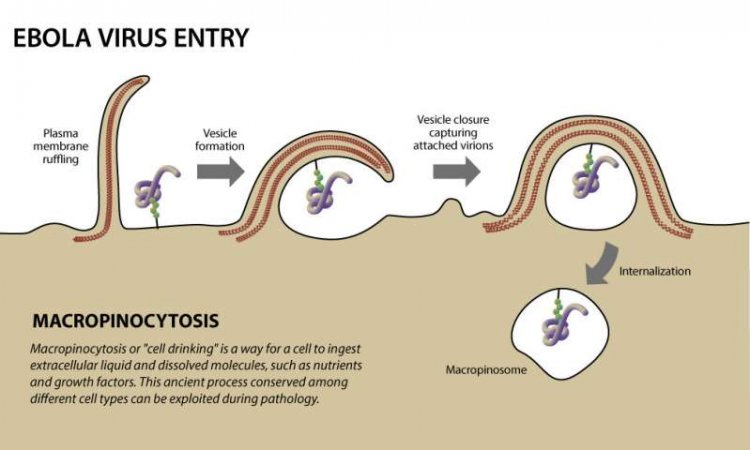
Source: University of Cambridge
News • mini viral RNA
Understanding the deadly nature of pandemic influenza
Researchers at the University of Cambridge and the University of Oxford have discovered a new molecule that plays a key role in the immune response that is triggered by influenza infections.
Influenza is one of the main infectious diseases in humans. Seasonal influenza viruses account for about 650,000 deaths per year, whereas pandemic strains such as the 1918 H1N1 pandemic virus have been linked to 50-100 million deaths worldwide. Highly pathogenic avian influenza viruses such as the H5N1 and H7N9 strains have a mortality rate of about 50% in humans.
The reasons for difference in disease severity and lethality caused by seasonal influenza viruses on the one hand, and pandemic and highly pathogenic avian influenza viruses on the other hand is still poorly understood. Previous research has indicated that in infections with the 1918 pandemic virus or infections with an H5N1 avian virus, a powerful immune response is established that leads to death.
This led Dr Aartjan te Velthuis of the University of Cambridge and his colleagues Prof Ervin Fodor, Dr Josh Long and Dr David Bauer of the University of Oxford, to ask what viral molecule can trigger this powerful immune response.
Significant breakthrough
The British groups first looked to how viruses are detected by the cell. Normally, an infected cell spots the presence of a virus by sensing the genetic material of the virus, RNA in the case of flu. Work by Dr Richard Randall, a co-author on the manuscript from the University of St Andrews, has shown that influenza viruses are good at hiding their RNA. This observation prompted te Velthuis and his colleagues to look for flu RNA that the virus was not able to hide from the cellular pathogen sensing system. What they found was truncated pieces of the viral genome that the virus had produced in error. The researchers called these pieces mini viral RNAs.
Fodor and his colleagues next investigated whether different influenza viruses produce mini viral RNAs at different frequencies and whether there was a link with the strong innate immune response that, for instance, the 1918 pandemic virus induces.
A combination of in vitro and in vivo experiments performed at Oxford and Cambridge, as well as by collaborators Leo Poon of the University of Hong Kong, Debby van Riel of the Erasmus Medical Centre, and Emmie de Wit of the Rocky Mountain Laboratories, revealed indeed a strong correlation between the ability of an influenza virus to generate mini viral RNAs and the amount of inflammation and cell death the virus infection caused. “We think it is a significant breakthrough and that it is particularly exciting that we are finding this factor a hundred years after the 1918 pandemic,” said Dr te Velthuis.
The research groups are now continuing their efforts to investigate whether there is a causal link between influenza virus mortality and the production of mini viral RNAs. Together with their latest work, these efforts may help us understand better how influenza viruses cause disease, how we can identify dangerous influenza viruses, and how to develop new antivirals against influenza virus infections.
Source: University of Cambridge and the University of Oxford
25.09.2018











